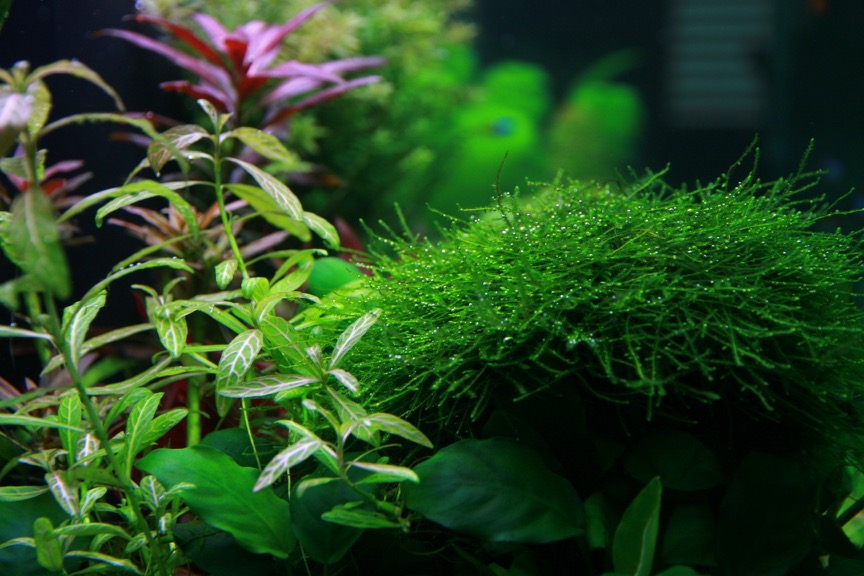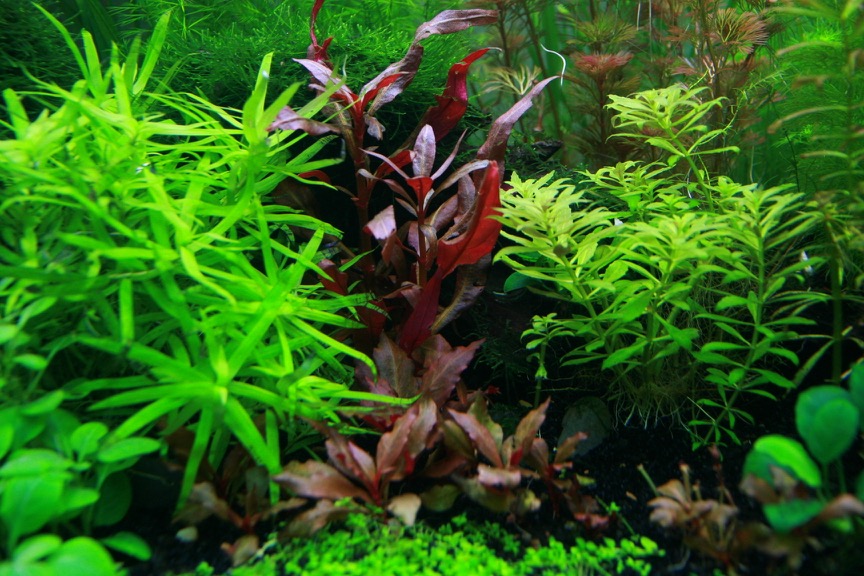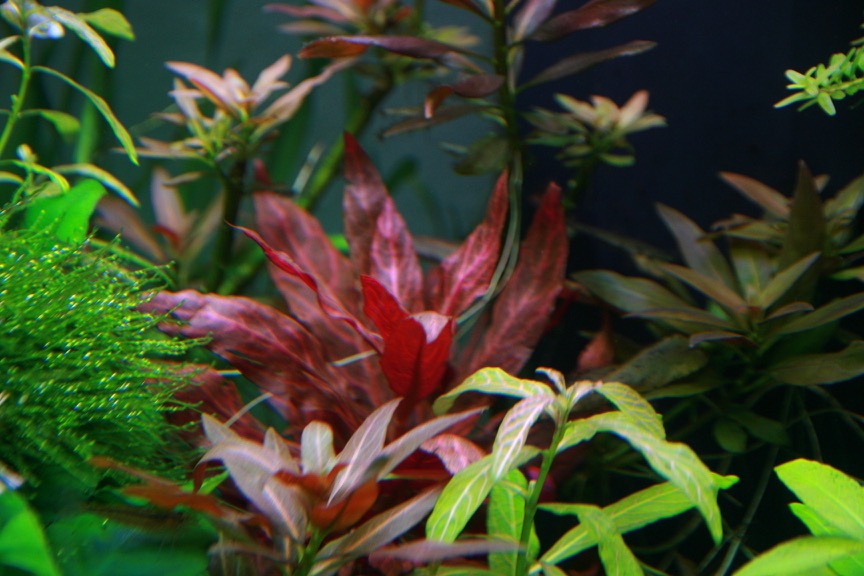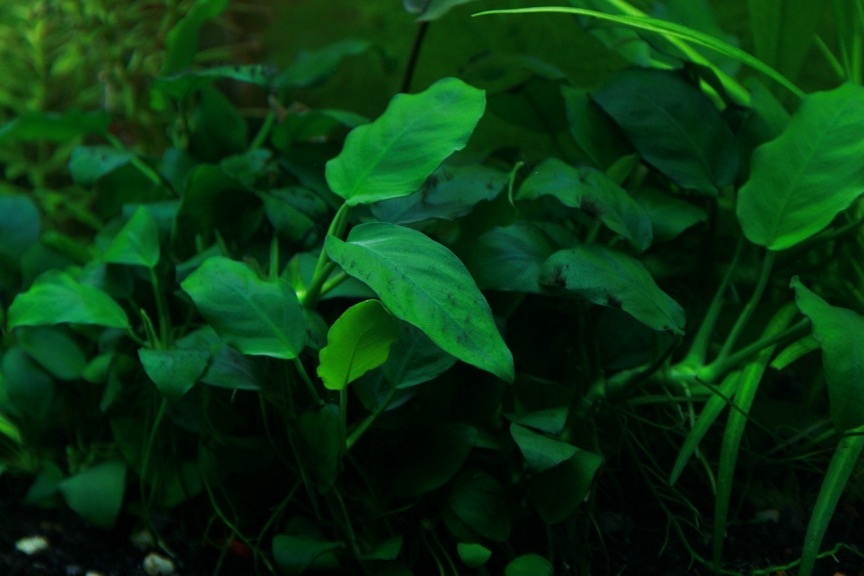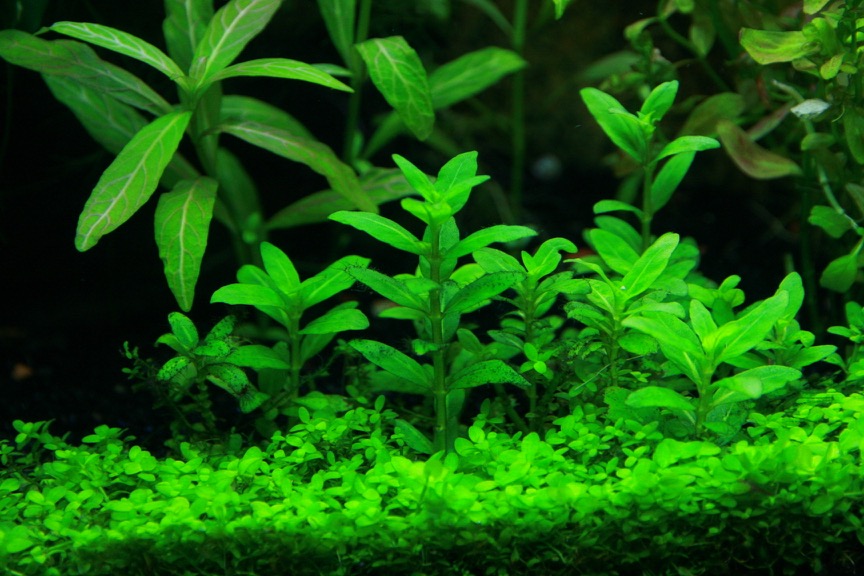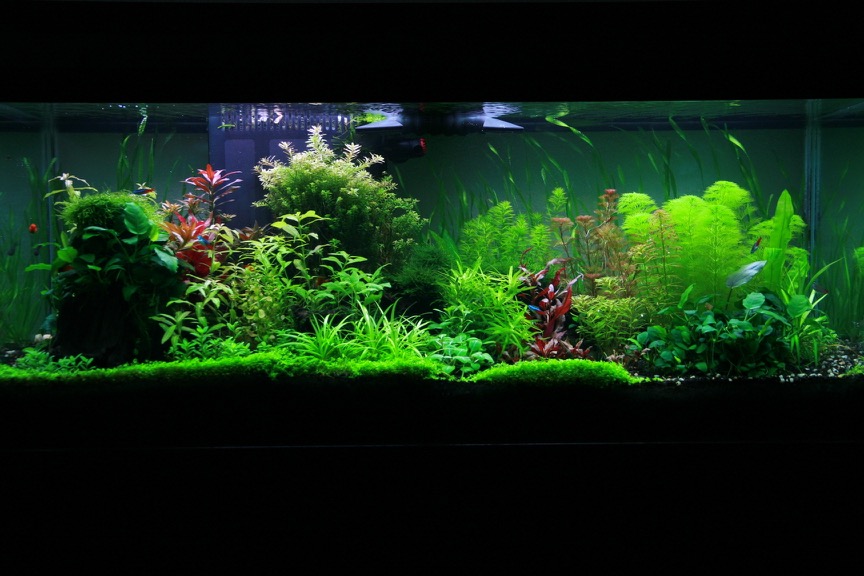Well, I kept procrastinating this due to lack of time, but finally I found the time to put together any needed information to start this thread dedicated to my own 75 gallon tank.
Where to start? I setup this tank back 2008, so it has been already 9 years. The tank is one of those standard “All-Glass Aquarium” tanks pre drilled with the built-in overflow, which is very convenient on one side, but on the other side it is a little cumbersome and ugly since not only takes big part of the internal tank room, but also limit your scape possibilities a great deal (and I never liked that black plastic can on the left-back of the tank).
In any case, I have enjoyed this tank so far, despite the many problems I have experienced. But… who has never had any problems with planted tanks, right?!
So, let’s jump on the details… get ready…
Filter and Overflow
Ok, from the equipment stand point, the tank is provided of an oversized wet/dry filter (I think the filter - sump - alone is about 20gl) giving me plenty of space for filters, bio media, etc. The main pump is a Eheim Compact 3000 (900 gl/hr), and the overflow is a standard Herbie I made myself from the original Megaflow system which was terribly noisy.
Here are some pictures of my tank and all the equipment inside the cabinet:


Co2 System
The Co2 system is driven by a Eheim Compact 2000, uses a 10gl Co2 tank with a Greenleaf regulator, solenoid and bubble counter (9 years old though, the new ones may be of better quality).
in the overall, Co2 is delivered this way:
1. Co2 gets injected into an Aqua Medic 1000 reactor.
2. From the reactor, flow gets into a DIY cerges 13” by 4” from a Watts water filter:
https://www.amazon.com/gp/product/B000E78XH6/ref=oh_aui_search_detailpage?ie=UTF8&psc=1
Please, note that the flow is connected to the cerges in the “natural” way: in to in and out to out so that water enters at the top and slowly goes down and sucked up from the center tube and then back at the top.
1. From the Cerges the pipe is connected directly to the main pump intake inside the sump to return with the rest of the flow inside the tank.
2. GAS BUILD UP VENT: at the top of the AM reactor, the vent is connected back to the intake of Eheim Compact 2000 so that gas built up has another chance to get chopped and dissolved.
3. The output of the Eheim Compact 2000 is connected to a Sera Flora Active reactor which is then connected back to the Aqua Medic.
I know, it is a little complicated, so I made a graphic to better understand it:

And here is a picture of the overall Co2 system and Apex controller:


Later in the day I get 2-3 inches of build up in the Sera reactor, but I almost see now bubbles in the tank. Also, I inject about 70-80ml/minute of Co2 and my Ph drop is over 1.3 (from about 7.20 down to 5.85):

I don’t know actually if this system is efficient or not, but the PH drop is there. Co2 starts 2 hours before photoperiod (excluding 30 minutes dawn effect) and stops 1 hour before lights turn off (before the last 30 minutes sunset effect). What I am having an hard time with (sometimes) is to keep the Co2 level stable during the photoperiod, and what I mean with “stable” I mean without keeping dropping as you can see from the pH graph above. I know that to keep it there I need to add O2, and that’s what I try doing by opening my Wet/Dry filter:

And that’s my only way to add oxygen since my tank is actually closed at the top. At the top I have glass covers and then lights laid over them.
Light
I light my tank with 2 cheap Aqueon T8 led fixtures that can accommodate 6 T8 tubes in total, but I use just 4 (3 in the back and 1 in the front screened by a double metal mesh). In the middle, between the two T8 fixtures, I have a Dutch BML LED light which gives me a dawn and sunset effect via Apex controller.

The Photoperiod is defined as follows:
1. Dawn starts at 12:30 pm via BML Led
2. Back lights (3 x T8 40w each) start at 1 pm
3. BML Led stops at 25% at 1pm and remains there until 4pm
4. Front light (1 x T8 40w) starts at 1:30 pm
5. BML Led stars ramping down at 4pm until 8:30 pm when all lights are off
6. Front light stops at 7 pm
7. Back lights stop at 8 pm
To make it simple: I have a 7 hours photoperiod with a 50-60 PAR at the substrate.
Where to start? I setup this tank back 2008, so it has been already 9 years. The tank is one of those standard “All-Glass Aquarium” tanks pre drilled with the built-in overflow, which is very convenient on one side, but on the other side it is a little cumbersome and ugly since not only takes big part of the internal tank room, but also limit your scape possibilities a great deal (and I never liked that black plastic can on the left-back of the tank).
In any case, I have enjoyed this tank so far, despite the many problems I have experienced. But… who has never had any problems with planted tanks, right?!
So, let’s jump on the details… get ready…
Filter and Overflow
Ok, from the equipment stand point, the tank is provided of an oversized wet/dry filter (I think the filter - sump - alone is about 20gl) giving me plenty of space for filters, bio media, etc. The main pump is a Eheim Compact 3000 (900 gl/hr), and the overflow is a standard Herbie I made myself from the original Megaflow system which was terribly noisy.
Here are some pictures of my tank and all the equipment inside the cabinet:
Co2 System
The Co2 system is driven by a Eheim Compact 2000, uses a 10gl Co2 tank with a Greenleaf regulator, solenoid and bubble counter (9 years old though, the new ones may be of better quality).
in the overall, Co2 is delivered this way:
1. Co2 gets injected into an Aqua Medic 1000 reactor.
2. From the reactor, flow gets into a DIY cerges 13” by 4” from a Watts water filter:
https://www.amazon.com/gp/product/B000E78XH6/ref=oh_aui_search_detailpage?ie=UTF8&psc=1
Please, note that the flow is connected to the cerges in the “natural” way: in to in and out to out so that water enters at the top and slowly goes down and sucked up from the center tube and then back at the top.
1. From the Cerges the pipe is connected directly to the main pump intake inside the sump to return with the rest of the flow inside the tank.
2. GAS BUILD UP VENT: at the top of the AM reactor, the vent is connected back to the intake of Eheim Compact 2000 so that gas built up has another chance to get chopped and dissolved.
3. The output of the Eheim Compact 2000 is connected to a Sera Flora Active reactor which is then connected back to the Aqua Medic.
I know, it is a little complicated, so I made a graphic to better understand it:
And here is a picture of the overall Co2 system and Apex controller:
Later in the day I get 2-3 inches of build up in the Sera reactor, but I almost see now bubbles in the tank. Also, I inject about 70-80ml/minute of Co2 and my Ph drop is over 1.3 (from about 7.20 down to 5.85):

I don’t know actually if this system is efficient or not, but the PH drop is there. Co2 starts 2 hours before photoperiod (excluding 30 minutes dawn effect) and stops 1 hour before lights turn off (before the last 30 minutes sunset effect). What I am having an hard time with (sometimes) is to keep the Co2 level stable during the photoperiod, and what I mean with “stable” I mean without keeping dropping as you can see from the pH graph above. I know that to keep it there I need to add O2, and that’s what I try doing by opening my Wet/Dry filter:
And that’s my only way to add oxygen since my tank is actually closed at the top. At the top I have glass covers and then lights laid over them.
Light
I light my tank with 2 cheap Aqueon T8 led fixtures that can accommodate 6 T8 tubes in total, but I use just 4 (3 in the back and 1 in the front screened by a double metal mesh). In the middle, between the two T8 fixtures, I have a Dutch BML LED light which gives me a dawn and sunset effect via Apex controller.
The Photoperiod is defined as follows:
1. Dawn starts at 12:30 pm via BML Led
2. Back lights (3 x T8 40w each) start at 1 pm
3. BML Led stops at 25% at 1pm and remains there until 4pm
4. Front light (1 x T8 40w) starts at 1:30 pm
5. BML Led stars ramping down at 4pm until 8:30 pm when all lights are off
6. Front light stops at 7 pm
7. Back lights stop at 8 pm
To make it simple: I have a 7 hours photoperiod with a 50-60 PAR at the substrate.


